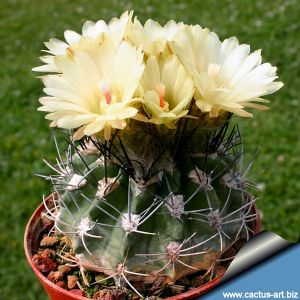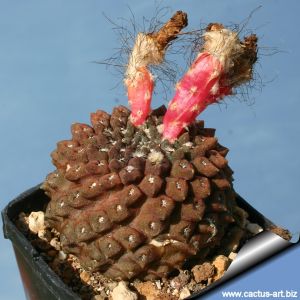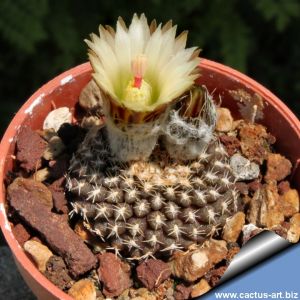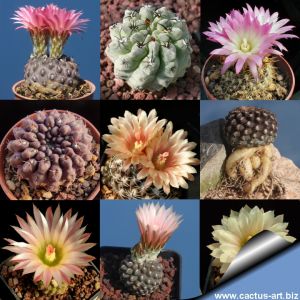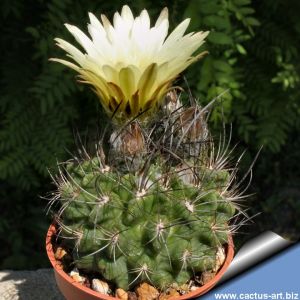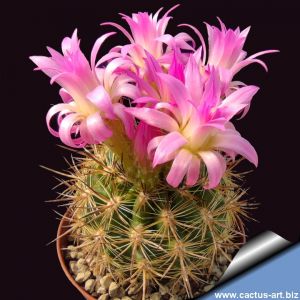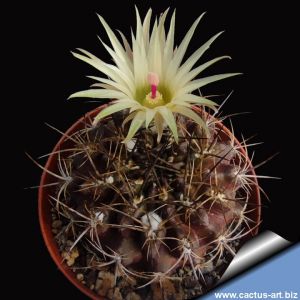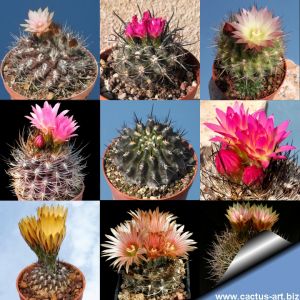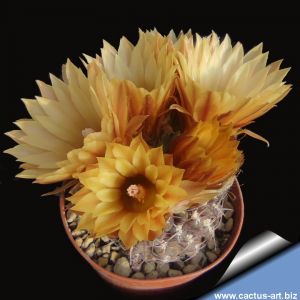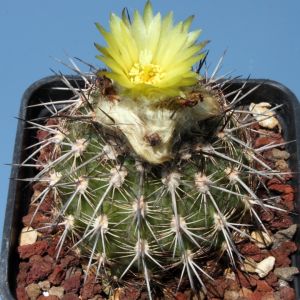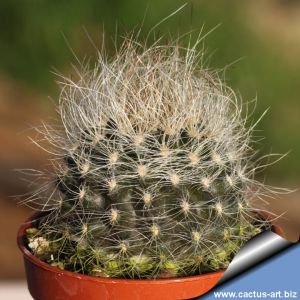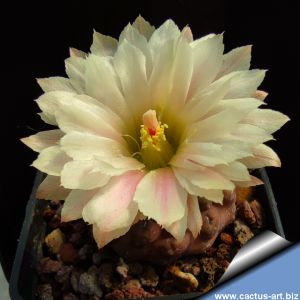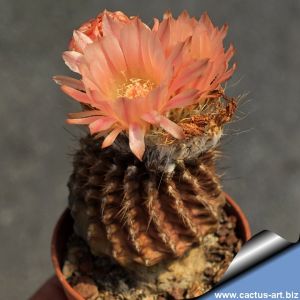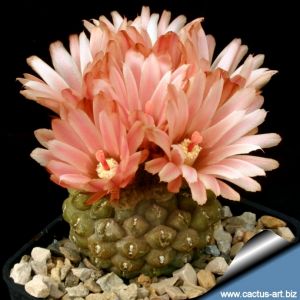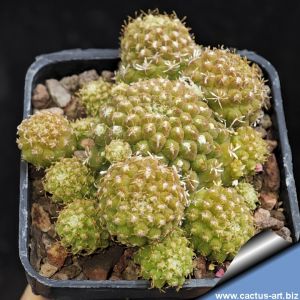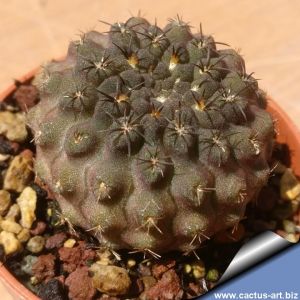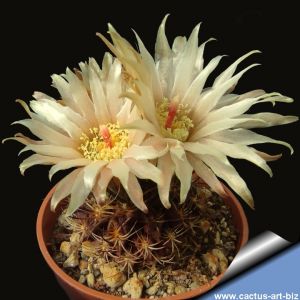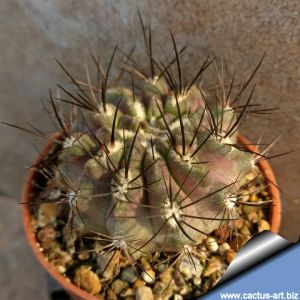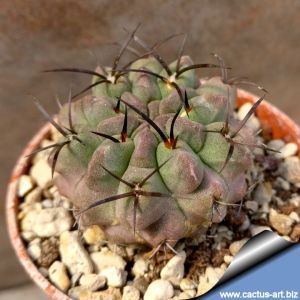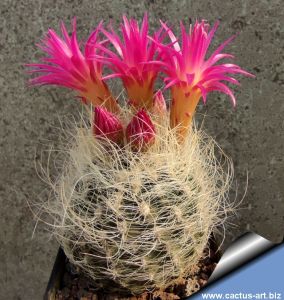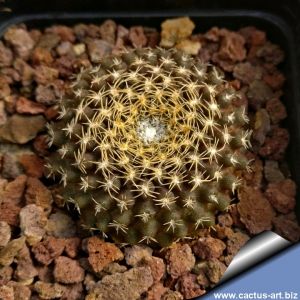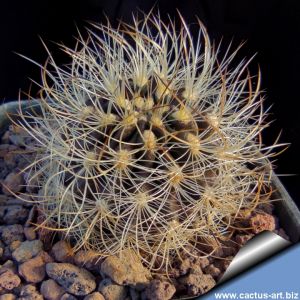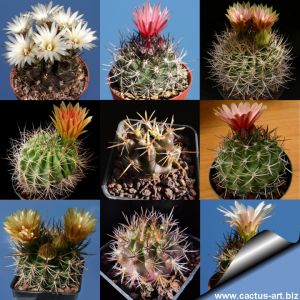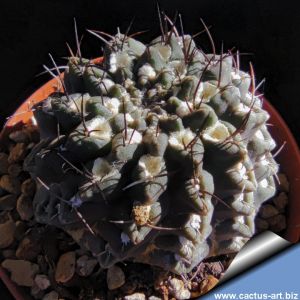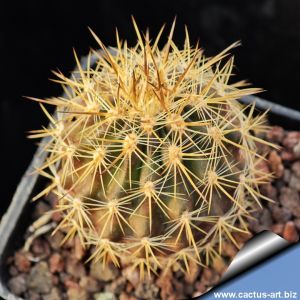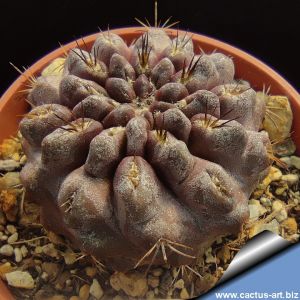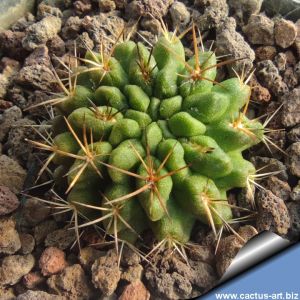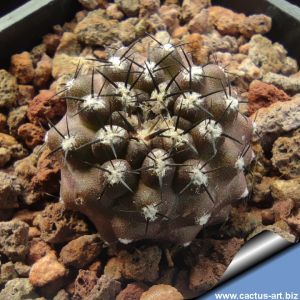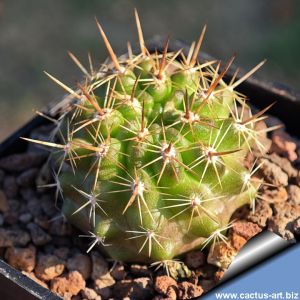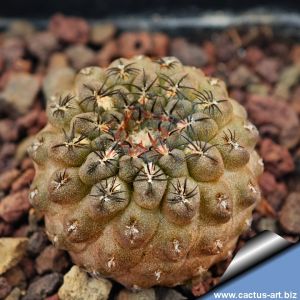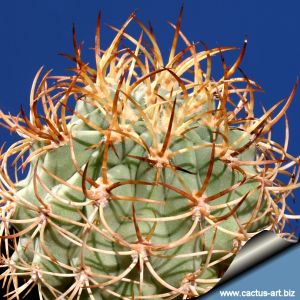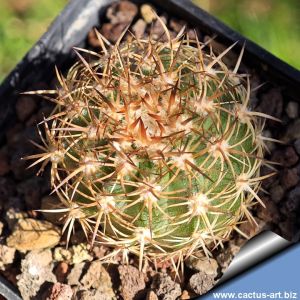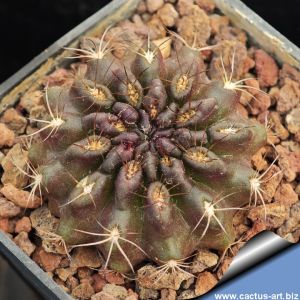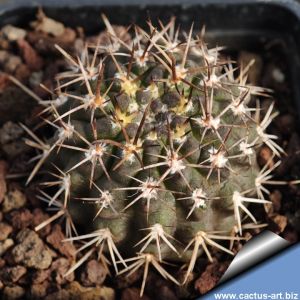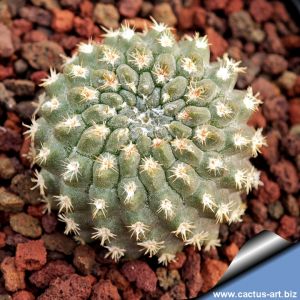-
1
This is a very beautiful and peculiar plant. The green body contrasts with the black spines. The creamy white flowers with pink hues are very pretty.
-
2
This is an almost spineless plant. If you like deep purple-bodied plants, you simply must get it (if you haven't already).
-
3
Fascinating species with flat grey-gree to dark-violet body. The spines are usually very reduced but it is quite variable. Flower greenish-yellow to pink.
-
4
-
5
Neochilenia/Chileorebutia mix, various forms in assortment. Variable and beautiful specimens.
-
6
Stiff, needle-like spines and an olive-green to brownish or blackish stem, often covered by a greyish-white waxy coating.
-
7
Eriosyce subgibbosa is a very variable species. Two-tone flower with magenta-purple petal tips and greenish-white throat, which give the sensation of being fluorescent. Spines from creamy yellow to dark gray-brown, different from plant to plant.
-
8
Geophytic cactus with solitary stems rising barely above ground level, dull dark green, in the sun often tinged with purple. Spines variable, tannish-brown, dull grey or black, straight to curved. Flowers creamy-white to pink.
-
9
A mix of Eriosyce from the Neoporteria group, assorted with various species and seed-grown hybrids. Each plant is one-of-a-kind, featuring unique shapes, spination, and flower colors.
-
10
-
11
Eriosyce islayensis is a small cactus with very woolly areoles and spreading spines, but quite variable. The flowers are funnelform, yellow , born from a yellowish woolly crown in summer. Ther fruits are club shaped pinkish to red.
-
12
Highly distinctive species with long, thin, soft, and flexible spines ranging from white to creamy-yellow. In some specimens, spine color deepens to beige, light brown, or nearly black, giving each plant a unique appearance.
-
13
Dark grey green body, stout black and red spines.
-
14
-
15
Curious clone of Eriosyce prized for its prolific basal pups - rare in this genus. Olive-to-brown stems sport tiny straight spines. The real marvel? Oversized pink blooms, like silk parasols shielding the spiny body.
-
16
-
17
Forma prolifera, very rare. It branches profusely from the base and forms dense colonies.
-
18
-
19
Small geophytic cactus with a solitary, partially buried body ranging in color from gray-purple to dark copper. Straight or slightly curved brown to black spines. Flowers in shades from cream-white to soft pink.
-
20
Small geophytic cactus with a flattened, dark brown, globular stem and taproot. Features short flattened spines and woolly areoles. Summer blooms in white, pink or yellow.
-
21
Eriosyce taltalensis is spiny geophytic cactus with stems rising barely above ground level. The stem is globose or semi-globular dull dark green, in the sun often tinged with purple. The roots are fibrous, arising from a short, conical taproot.
-
22
Solitary stem boasting a stunning grey-blue-green hue with purple hints, topped with white wool. Its flowers are subtly hued in green, cream, or pink.
-
23
Selection of Eriosyce gerocephala with thin, soft, and flexible spines in pure white to creamy-white. The
dense, bright white spination gives the plant a luminous appearance and significant ornamental value.
-
24
Eriosyce chilensis v. albiflora is a beautiful cactus with pale green stems cowered with dense whitish-yellow to brownish spines. The flowers are produced in summer, closely packed apically from young areoles, they are flattish, usually creamy white.
-
25
This is a greyish-green cactus that grows very flat to the soil. Often it acquires a reddish or brownish-black colour due to sun exposure. The spines are fattened against the tubercles and pectinate yellowish, white or pale coffee coloured
-
26
Eriosyce gerocephala, best known as Neoporteria gerocephala is distinguished by thin, soft and flexible cream-white spines. Very nice!
-
27
A very characteristic cactus bearing long, slender, soft, and pliable spines in shades from creamy-white to beige or brown.
-
28
Mix of Eriosyce from the Horridocactus group, assorted with various species and seed-grown hybrids. Each plant is one-of-a-kind, featuring unique shapes, spination, and flower colors.
-
29
-
30
-
31
-
32
Dark grey-brown stem and short spines that vary from brownish to greyish-black in color.
-
33
Collected by F.Ritter (FR712) in1958 as Pyrrhocactus saxifragus. Locality Guanillos, Tarapacá, Department of Iquique, Chile
-
34
Spines curved upward, greyish brown, flowers yellowish. Syn: Pyrrhocactus setosiflorus v. intermedius
-
35
Pretty pink flowers, whitish base. Fresh green body, brown spines.
-
36
Spiny dark olive-green to purple body with white woolly depressed apex. Areoles bear flakes of silky white hairs. Pinkish flowers. Potted in round (5.5 cm Ø) or square (6×6 cm) containers.
-
37
Small, low purplish-brown body with yellowish flowers. Spines are short, pressed close to the body, and curved inward.
-
38
-
39
-
40
Very nice!
-
41
The "aurata" is the largest of the Eriosyce, a very spiny barrel cactus with dimensions similar to the Echinocactus grusoni! Strong golden, amber or brown spines curved upwards. This fascinating plant is known by the Chileans with the name of sandillon.
-
42
Features a prominent long central spine and sweetly scented yellow blooms.
-
43
Green, pinkish grey to a deep purple body.
-
44
Stem dark brown, round to slightly elongated. Spines are somewhat curved upward, grayish-brown. Flowers are creamy yellow, sometimes flushed with red.
Syn.: Pyrrhocactus setosiflorus var. intermedius.
-
45
Petite variety featuring smaller body and shorter spines compared to other forms.

